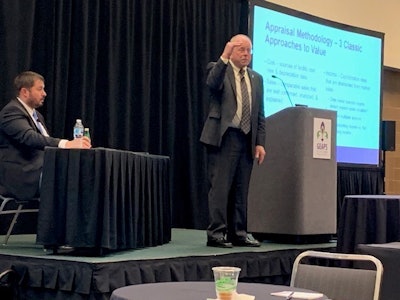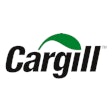
The merger and acquisition process is handled very differently depending on the situation. Properly valuing the acquisition can provide a successful transfer of assets and set you up for long-term success.
During the GEAPS Exchange Monday afternoon session, “Mergers and Acquisitions 2.0: Evaluating the Intangible,” Nick Clinebell, professional engineer with Nohr Wortmann Engineering, and Jeff Berg, owner/president with Crown Appraisals Inc. took an in-depth look at how businesses are valued by applying traditional and innovative approaches.
Consolidation/economic drivers
Consolidation is ongoing in agribusiness, says Berg. “There’s a lot of business models and competition from multi-national grain, fertilizer/agronomy companies,” he says. “Multinationals with origination, inland grain terminals, shuttle loaders, etc. are tough competition."
Large merged coops/privates with multiple business units – shuttle loaders, regional fertilizer plant, ethanol plants, oil crusher —have internal synergies.
Some economic drivers to keep in mind during the M&A process include economies of scale, buying power, rail service/barge transportation and synergies between businesses.
Importance of accurate valuations
Agribusiness valuations are moving target as economic conditions change, therefore it’s important to have a qualified third party appraiser who has no emotional attachment.
“These appraisers are a valuable part of the M&A team,” says Berg.
In an appraisal or evaluation, you’re looking at bricks and mortar, equipment and intangibles. The assessor will look at past five years of financials.
Also important says Clinebell – read your insurance policy. Look for policy gaps and really know what’s in it. “During the process, we always scour insurance claims and what’s happened at that facility to know what we’re getting into,” he says.
Structural considerations during evaluation
Clinebell points out some things appraisers look for when appraising structural components of your facility:
- Concrete silo – evidence of active cracking; does the tunnel wall have out of plane movement, exposed rebar? Are anchor bolts in the foundation missing and the right size?
- Steel bin – anchorage, tunnel and stem wall, bolts missing or in failure
- Wood crib/flat storage facilities – damaged cross-bracing, structural steel oxidation or spalling concrete
Other engineering considerations include environmental (Phase I, Phase II, storm water and demolition) and geotechnical (soils, ground water, site drainage) issues.
“For example, if they have soil reports, get them,” says Clinebell. “Know your ground water elevation. These all help with the process.”
How to select an agribusiness valuation expert
In order to select an appraiser to bring into your M&A experience, Berg says there are several items to look for:
- Know the appraiser’s specialization and experience
- Know their capacity for financial analysis and consulting
- Know their industry depth of understanding and knowledge
- Valuation conclusions supported by comparable sales
“All of these credentials are skill sets that can add to you M&A team,” says Berg.
Intangible assets/market value
During an assessment, intangible items include the safety culture, engineering concerns, business enterprise synergies, the business name, a customer list and current workforce can be used to evaluate a business. “It’s the market value of the going concern,” says Berg. "Tangible and intangible assets all depreciate differently."
















